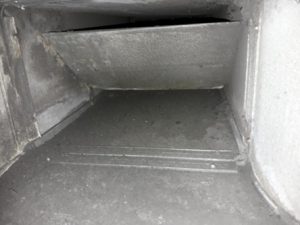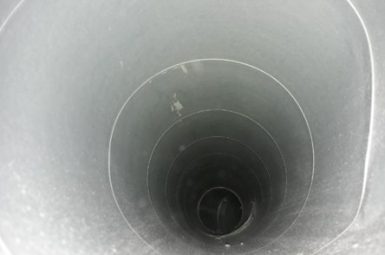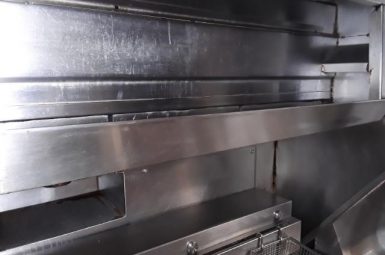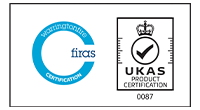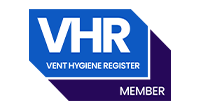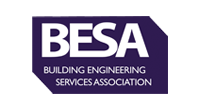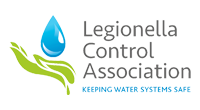High-Rise Ventilation Ductwork Cleaning
Ensure your ventilation system cleaning is Compliant
The Importance of Ventilation Ductwork Cleaning
Dirt, dust, and debris are no strangers to industrial Heating, Ventilation and Air Conditioning (HVAC) systems – and when they build up in those systems, they can interfere not only with the efficiency and workload of the HVAC system, but also impacts the indoor air quality. This can be both costly to the plant and associated HVAC system as well as the individual.
The ventilation system can be home to:
- Particulates – Mixture of solids drifting in the air, consisting of dust, dander (skin flakes), soot, pollen and smoke particles
- Microbes – Bacteria, viruses, fungi, spores and mould
- Gases/Odours – Indoor gases release from furniture, carpets, cleaning chemicals, insulation etc.
High-Rise Ventilation
High -rise ventilation differs to general ventilation systems in a few ways. In most cases an air handling is located on the roof of the building feeding a riser that runs the full height of the building with small spigots off into individual rooms.
Due to the layout of these systems they are susceptible to particulate build-ups in the smaller ducts and become easily unbalanced, causing further build-up in low flow rate areas as well as additional load on the air handling equipment.
Sleeping Accommodation Ventilation in High-Rise Buildings
Sleeping accommodation ventilation systems in high-rise buildings are subject to stricter monitoring and cleaning legislations as they have longer occupancy times and additional vulnerabilities if the occupant is sleeping. Please see our technical bulletin on sleeping accommodations for further information.
There is often less air changes in these rooms either from the occupant modifying the ventilation to reduce drafts and heating cost or changes in the building leading to different ventilation than originally designed (New windows, doors, etc.).
Regularly scheduled monitoring and cleaning allows the responsible person to act on any issues found and to ensure that their building is compliant and safe for its occupants.
Sick Building Syndrome (SBS)
Sick Building Syndrome (SBS) is a condition in which people in the building suffer from symptoms resulting physical or environmental factors such as ventilation, workplace layout etc.
Common Symptoms
- headaches
- blocked or runny nose
- dry, itchy skin
- dry, sore eyes or throat
- cough or wheezing
- rashes
- tiredness and difficulty concentrating
The best way to combat the effects of these foreign materials and particulates is to invest in professional and thorough HVAC systems Ventilation Ductwork cleaning from Hydro-X Air. Hydro-X Air Ltd can certify that the above areas have been cleaned in accordance with the BESA TR19 Guideline – Internal Cleanliness of Ventilation Systems.
BESA TR19 offers practical guidance on testing and cleaning of air distribution ventilation systems to meet required standards. Working to this standard ensures that your ductwork systems are cleaned to the highest standard to ensure the efficiency of your system and more importantly the comfort and wellbeing of your staff.
We also offer to replace extract grilles and a re-balancing service (Subject to access to the balancing points) post clean to ensure that your system is running as efficiently as possible.
Before & After Image Examples Hydro-X Air have cleaned and certified to BESA TR19 Guideline – Internal Cleanliness of Ventilation Systems
Before
After
Legislation – Health and Safety Law
The Management of Health & Safety at Work Regulations 1999 impose a duty on every employer to make a suitable and sufficient assessment of:
- the risks to the health and safety of their employees to which they are exposed whilst they are at work, and
- the risks to the health and safety of persons not in their employment arising out of or in connection with the conduct by him of his undertaking.
Regulation 5 of the Workplace (Health, Safety and Welfare) Regulations 1992 imposes a duty to clean mechanical ventilation systems “as appropriate”. Regulation 6 states, “effective and suitable provision shall be made to ensure that every enclosed workplace is ventilated by a sufficient quantity of fresh or purified air”.
ACOP6 (52) relating to Regulation 6 of the Workplace (Health, Safety and Welfare) Regulations, 1992 states that “mechanical ventilation systems (including air conditioning systems) should be regularly and properly cleaned, tested and maintained to ensure that they are kept clean and free from anything which may contaminate the air”.
British Standard BS EN 15780 provides benchmarks to define cleanliness and dirtiness.
Additional Useful Links
Importance of ventilation to reduce spread of COVID-19
At Hydro-X Air, not only can we monitor and clean your high-rise ventilation ductwork systems, but we can also assist with the following services:
Ventilation Ductwork Cleaning and Maintenance
Have peace of mind that your ventilation systems are safe and compliant by having them cleaned to BESA TR19 Guideline – Internal Cleanliness of Ventilation Systems standards.
Laundry Extract Ductwork Cleaning & Maintenance
Avoid fire risks and premature plant wear by getting your laundry extract cleaned to BESA TR19 Guideline – Internal Cleanliness of Ventilation Systems standards
Kitchen Extract Cleaning
A requirement by law to make sure that your grease extract system has been cleaned by a regulated company to BESA TR19 – Grease Specification standards
Ventilation Hygiene & Indoor Air Quality Assessments
Monitor your ductwork systems and the quality of the air in your buildings and be able to pinpoint locations that require cleaning as soon as they reach trigger limits.
Local Exhaust Ventilation (LEV)
Ensure that your LEV systems are compliant and tested to HSG258 standards by P601 trained engineers and get a quote for any remedials that need to be carried out.
Talk to us today about your air hygiene requirements
We work in a variety of industries

Education

Hospitality

Facilities Management

Government Buildings




















